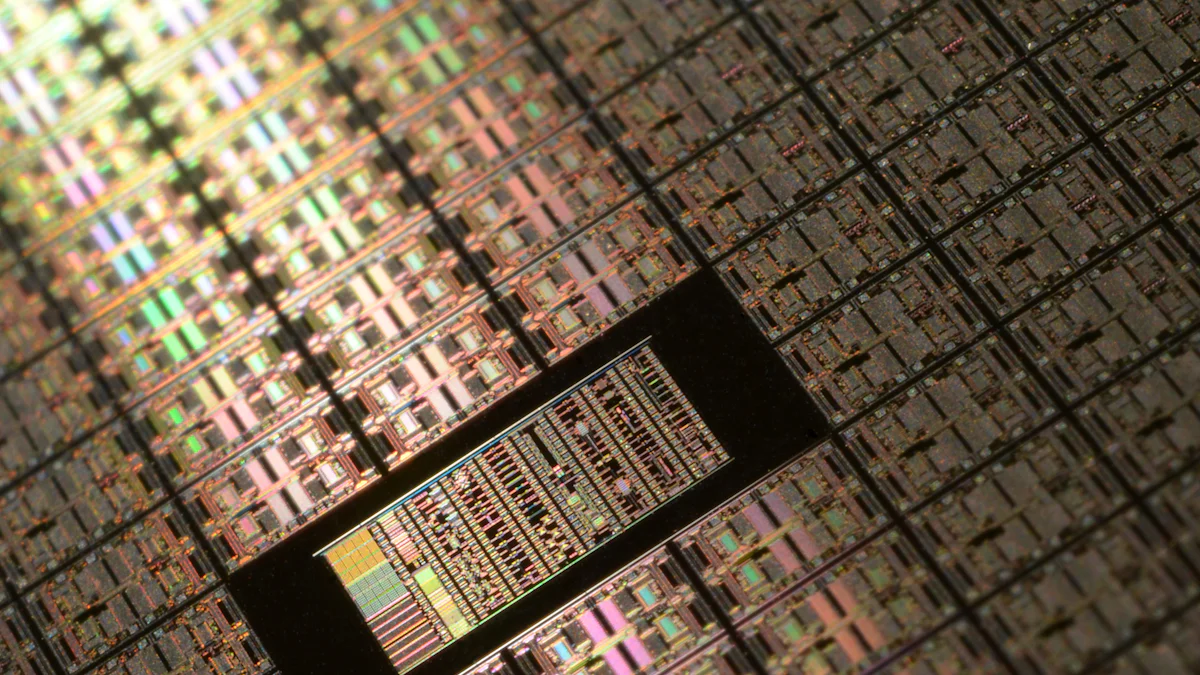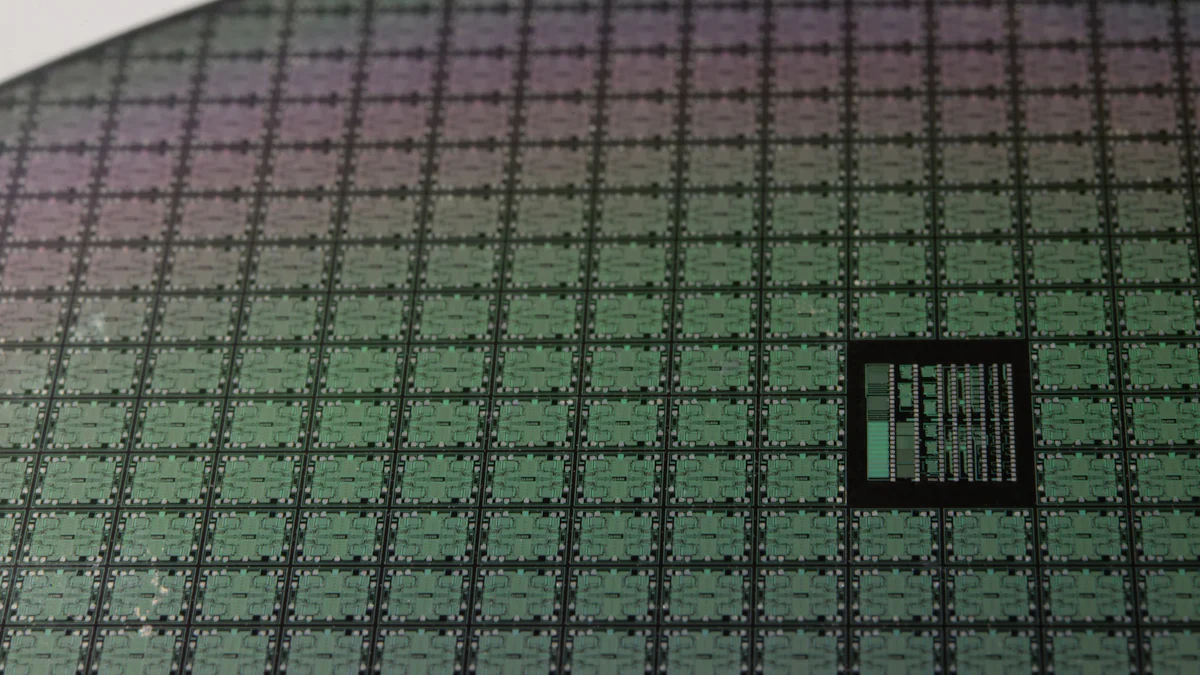
Siliconcarbid (SiC) Boote dienen als unverzichtbare Komponenten in der Halbleiterindustrie. Sie spielen eine zentrale Rolle bei der Herstellung hochwertiger elektronischer Geräte. Diese Boote halten Halbleiterscheiben während kritischer Fertigungsprozesse, die Präzision und Gleichmäßigkeit gewährleisten. Die Nachfrage nach SiC Booten steigt weiterhin aufgrund ihrer Fähigkeit, Effizienz zu steigern, die Waferqualität zu verbessern und Verschmutzungsrisiken zu minimieren. Ihre Anwendung umfasst verschiedene Branchen, darunter Luft- und Raumfahrt, Verteidigung und chemische Verarbeitung, die ihre Vielseitigkeit und Bedeutung in der modernen Technologie hervorheben.
Wichtigste Erkenntnisse
- SiC Boote sind entscheidend zur aufrechterhaltung der waferintegrität während der halbleiterherstellung, zur sicherstellung der präzision und zur verringerung der schadensrisiken.
- Ihre außergewöhnliche thermische stabilität ermöglicht es SiC Booten, zuverlässig in Hochtemperaturprozessen zu arbeiten und die Gesamtproduktionseffizienz zu steigern.
- Die chemische Beständigkeit von SiC Booten minimiert Verschmutzungsrisiken, was zu höheren Ausbeuten und verbesserter Qualität elektronischer Bauteile führt.
- Investitionen in SiC Boote können zu langfristigen Kosteneinsparungen aufgrund ihrer Haltbarkeit und reduzierten Bedarf an häufigen Austauschen führen.
- SiC Boote ermöglichen eine gleichmäßige Wärmeverteilung während Diffusion und Oxidation, was für die Erzielung einheitlicher Halbleitereigenschaften wesentlich ist.
- Die wachsende Nachfrage nach SiC Booten spiegelt ihre Vielseitigkeit in verschiedenen Branchen wider, darunter Luft- und Raumfahrt und Verteidigung, und unterstreicht ihre Bedeutung in der modernen Technologie.
- Die fortschreitenden Innovationen im SiC-Bootdesign versprechen, den wachsenden Anforderungen der Halbleiterindustrie gerecht zu werden und ihre weitere Relevanz und Wirksamkeit zu gewährleisten.
Anwendungen von SiC Booten in der Halbleiterfertigung

Wafer Processing
Rolle in Wafer Laden und Entladen
In semiconductor manufacturing, SiC Boote eine entscheidende Rolle bei der Waferverarbeitung spielen. Sie dienen als Träger für Siliziumwafer in verschiedenen Stufen, wie Ätzen, Reinigen und Diffusion. Das robuste Design dieser Boote sorgt dafür, dass Wafer mit Präzision geladen und entladen werden, wodurch das Schadensrisiko minimiert wird. Diese Präzision ist entscheidend für die Aufrechterhaltung der Integrität der Wafer, die die Grundlage von Halbleiterbauelementen sind.
Bedeutung in der Erhaltung der Wafer-Integrität
Die Aufrechterhaltung der Waferintegrität ist bei der Halbleiterproduktion von größter Bedeutung. SiC Boote zeichnet sich in diesem Aspekt durch ihre überlegene mechanische Festigkeit und geringe thermische Ausdehnung aus. Diese Eigenschaften verhindern eine Verkettung und Rißbildung, so dass Wafer während der Hochtemperaturprozesse intakt bleiben. Durch die Erhaltung der Waferintegrität können die Hersteller höhere Ausbeuten erzielen und zuverlässigere elektronische Komponenten produzieren.
Hochtemperaturbetrieb
Verwendung in Diffusions- und Oxidationsverfahren
SiC Boote bei Hochtemperaturbetrieben, insbesondere bei Diffusions- und Oxidationsverfahren, unabdingbar sind. Ihre außergewöhnliche Wärmeleitfähigkeit ermöglicht eine gleichmäßige Wärmeverteilung, die wesentlich ist, um konsistente Ergebnisse zu erzielen. Bei der Diffusion erleichtern diese Boote die gleichmäßige Dotierung von Substraten, einen kritischen Schritt bei der Definition der elektrischen Eigenschaften von Halbleitern. Bei der Oxidation sorgen sie dafür, dass sich die Siliciumdioxidschicht gleichmäßig bildet und die Geräteleistung verbessert.
Leistung in extremen Thermischen Umgebungen
Die Fähigkeit SiC Boote extremen thermischen Umgebungen standzuhalten, unterscheidet sie von traditionellen Materialien. Ihre hohe thermische Stabilität macht sie ideal für den Einsatz in Prozessen, die Temperaturen über 1000°C erfordern. Diese Widerstandsfähigkeit verbessert nicht nur die Prozesseffizienz, sondern erweitert auch die Lebensdauer der Boote und macht sie zu einer kostengünstigen Wahl für die Hersteller.
LPCVD und Boron Diffusion
Anwendung in LPCVD Phase der TOPCon Produktion
In der LPCVD (Low-Pressure Chemical Vapor Deposition) Stufe der TOPCon (Tunnel Oxide Passivated Contact) Produktion, SiC Boote notwendig sind. Sie bieten eine stabile Plattform für Wafer, die eine gleichmäßige Abscheidung von dünnen Folien gewährleistet. Diese Gleichmäßigkeit ist entscheidend für die Entwicklung fortschrittlicher Halbleiterbauelemente, wie Solarzellen und Hochleistungstransistoren.
Effizienz bei Bor-Diffusionsprozessen steigern
Die Bordiffusion ist ein Schlüsselverfahren bei der Halbleiterherstellung und SiC Boote die Effizienz deutlich steigern. Ihre chemische Beständigkeit verhindert Verunreinigungen, während ihre thermischen Eigenschaften eine präzise Kontrolle über den Diffusionsprozess gewährleisten. Durch die Optimierung der Bor-Diffusion können die Hersteller die elektrischen Eigenschaften von Halbleitern verbessern, was zu besseren elektronischen Geräten führt.
Vorteile der Verwendung von SiC Booten

Durability and Longevity
Widerstand gegen Wear und Tear
Siliconcarbid (SiC) Boote zeigen bemerkenswerte Verschleißfestigkeit, so dass sie eine bevorzugte Wahl in der Halbleiterherstellung. Ihre außergewöhnliche Festigkeit und Härte sorgen dafür, dass sie den strengen Gebrauch ohne Abbau standhalten. Im Gegensatz zu herkömmlichen Graphitbooten halten SiC-Boote ihre strukturelle Integrität im Laufe der Zeit aufrecht und reduzieren den Bedarf an häufigen Austauschen. Diese Langlebigkeit führt zu erheblichen Kosteneinsparungen für Hersteller, da sie sich für längere Zeit auf SiC Boote verlassen können, ohne die Leistung zu beeinträchtigen.
Wirtschaftlichkeit Über die Zeit
Die lange Lebensdauer von SiC Booten trägt zu ihrer Wirtschaftlichkeit bei. Obwohl die anfängliche Investition im Vergleich zu anderen Materialien höher sein kann, führt die reduzierte Häufigkeit von Ersatz und Wartung zu geringeren Gesamtkosten. Hersteller profitieren von der konsequenten Leistung von SiC Booten, die Ausfallzeiten minimiert und die Produktivität erhöht. Durch die Investition in SiC-Boote können Unternehmen eine günstige Investitionsrendite erzielen, was ihnen eine finanziell fundierte Wahl für Halbleiteranwendungen ermöglicht.
Thermische Stabilität
Leistung bei hohen Temperaturen
SiC Boote zeichnen sich durch Hochtemperatur-Umgebungen aus, eine kritische Anforderung bei der Halbleiterverarbeitung. Ihre Fähigkeit, extremen Temperaturen standzuhalten, ohne mechanische Stabilität zu verlieren, unterscheidet sie von anderen Materialien. Diese thermische Stabilität sorgt dafür, dass SiC-Boote bei Prozessen wie Diffusion und Oxidation zuverlässig arbeiten, wobei Temperaturen oft über 1000° liegen. C. Die gleichbleibende Leistung von SiC Booten bei diesen Temperaturen erhöht die Qualität und Präzision von Halbleiter-Geräten.
Auswirkungen auf die Prozesseffizienz
Die thermischen Eigenschaften von SiC Booten beeinflussen die Prozesseffizienz erheblich. Ihre geringe thermische Ausdehnung minimiert das Risiko von Verkettungen oder Rissbildung, so dass die Wafer während der Hochtemperaturoperationen intakt bleiben. Diese Stabilität ermöglicht eine präzise Kontrolle über Fertigungsprozesse, was zu höheren Ausbeuten und einer verbesserten Geräteleistung führt. Durch konsequente thermische Bedingungen tragen SiC Boote zur Gesamteffizienz und Zuverlässigkeit der Halbleiterproduktion bei.
Chemical Resistance
Kompatibilität mit verschiedenen Chemikalien
SiC Boote bieten ausgezeichnete chemische Beständigkeit, so dass sie mit einer Vielzahl von Chemikalien, die in der Halbleiterfertigung verwendet werden, kompatibel. Ihre Fähigkeit, chemische Korrosion zu widerstehen, sorgt dafür, dass sie ihre strukturelle Integrität auch bei rauen Umgebungen erhalten. Diese Kompatibilität reduziert das Risiko einer Verunreinigung, was für die Herstellung hochwertiger Halbleiterbauelemente von entscheidender Bedeutung ist. Hersteller können sich auf SiC Boote verlassen, um eine stabile und saubere Umgebung für die Waferverarbeitung zu bieten.
Reduzierung von Kontaminationsrisiken
Die chemische Beständigkeit von SiC Booten spielt eine wichtige Rolle bei der Minimierung von Kontaminationsrisiken. Durch die Vermeidung chemischer Wechselwirkungen, die die Waferintegrität beeinträchtigen könnten, helfen SiC Boote, die Reinheit von Halbleitermaterialien zu erhalten. Diese Verringerung der Verunreinigungsrisiken führt zu höheren Ausbeuten und zuverlässigeren elektronischen Komponenten. Die Verwendung von SiC Booten in der Halbleiterfertigung sorgt dafür, dass die Endprodukte strenge Qualitätsstandards erfüllen, ihre Leistung und Langlebigkeit verbessern.
Fallstudien und Beispiele
Annahme durch die Kommission
Beispiele für Unternehmen, die SiC-Boote verwenden
Zahlreiche Unternehmen in der Halbleiterindustrie haben SiC Boote aufgrund ihrer außergewöhnlichen Leistung und Zuverlässigkeit umarmt. So haben führende Halbleiterhersteller SiC Boote in ihre Produktionslinien integriert, um effizienz der waferbearbeitung. Diese Unternehmen erkennen den Wert von SiC-Booten bei der Aufrechterhaltung der Waferintegrität und Verringerung der Kontaminationsrisiken. Durch die Übernahme von SiC Booten erreichen sie höhere Erträge und produzieren überlegene elektronische Komponenten.
Erfolgsgeschichten und Ergebnisse
Die Übernahme von SiC Booten hat zu bemerkenswerten Erfolgsgeschichten in der Halbleiterindustrie geführt. Ein bemerkenswertes Beispiel ist ein großes Halbleiterunternehmen, das nach der Umsetzung von SiC-Booten eine signifikante Steigerung der Produktionseffizienz gemeldet hat. Das Unternehmen erlebte eine Reduzierung von Waferfehlern und eine Verbesserung der Gesamtproduktqualität. Dieser Erfolg unterstreicht die kritische Rolle von SiC Booten bei der Entwicklung von Halbleiterfertigungsprozessen.
Technologische Fortschritte
Innovationen in SiC Boat Design
Neuere technologische Fortschritte haben Innovationen in SiC-Boot-Design angestoßen. Die Hersteller verfeinern kontinuierlich die Qualität und Leistung von SiC Booten, um den wachsenden Anforderungen der Halbleiterindustrie gerecht zu werden. Diese Innovationen umfassen eine verbesserte thermische Stabilität und eine verbesserte chemische Beständigkeit, die SiC Boote als unverzichtbare Werkzeuge in der Halbleiterfertigung weiter verfestigen. Die laufenden Forschungs- und Entwicklungsbemühungen sorgen dafür, dass die SiC-Boote an der Spitze des technologischen Fortschritts stehen.
Zukunftstrends in Halbleitern Herstellung
Die Zukunft der Halbleiterfertigung sieht vielversprechend mit der weiteren Integration von SiC Booten. Die Nachfrage nach Hochleistungsmaterialien wie SiC-Booten wächst mit der Expansion der Branche. Die Bereitstellung von 5G-Netzwerken und der Anstieg von Breitband-Halbleitern bieten erhebliche Chancen für SiC-Boote. Diese Trends unterstreichen die Bedeutung von SiC-Booten bei der Innovation und der Bewältigung der Herausforderungen der modernen Halbleiterproduktion.
SiC Boote sind als Eckpfeiler in der Halbleiterfertigung entstanden und bieten beispiellose Vorteile in verschiedenen Anwendungen. Ihre hohe Wärmeleitfähigkeit und mechanische Festigkeit sorgen für eine effiziente Waferverarbeitung und hochwertige Produktion. Diese Boote reduzieren deutlich die Kontaminationsrisiken und erhöhen die Zuverlässigkeit elektronischer Geräte. Da sich Branchen wie Luft- und Raumfahrt und Verteidigung zunehmend auf SiC-Boote für ihre Widerstandsfähigkeit in rauen Umgebungen verlassen, wird ihre Bedeutung bei der Entwicklung der Halbleitertechnologie deutlich. Die laufenden Innovationen im SiC-Bootdesign versprechen, den wachsenden Anforderungen moderner High-Tech-Anwendungen gerecht zu werden und ihre Rolle in der Zukunft der Halbleiterfertigung zu verfestigen.
FAQ
Warum Silikon Carbide Boote für Halbleiteranwendungen wählen?
Siliconcarbid (SiC) Boote bieten zahlreiche Vorteile bei der Halbleiterverarbeitung. Sie verbessern die Effizienz, produzieren hochwertige Wafer und reduzieren Verschmutzungsrisiken. Ihre konsequente Leistung in anspruchsvollen Umgebungen ermöglicht Halbleiterherstellern, bessere Ertragsraten zu erzielen und hohe Produktqualitätsstandards zu gewährleisten.
Was sind die wichtigsten Anwendungen von SiC Boote?
SiC-Boote spielen bei Hochtemperaturdiffusionsprozessen eine entscheidende Rolle beim Halten von Halbleiterwafern. Sie gewährleisten sogar die Exposition von Wafern gegenüber Gasen und Chemikalien. Ihre hohe Wärmeleitfähigkeit erleichtert eine gleichmäßige Erwärmung, was für die Erzielung einheitlicher Diffusionsergebnisse wesentlich ist.
Was sind die Vorteile von SiC Boote in Wafer Verarbeitung?
SiC Boote zeigen bemerkenswerte Widerstand gegen thermischen Schock und halten ihre Form bei extremen Temperaturen. Damit ist eine gleichbleibende und zuverlässige Waferpositionierung ohne Verformung gewährleistet, was sie ideal für die Waferbearbeitung macht.
Wie werden SiC Boote in der Halbleiterfertigung verwendet?
Im Halbleiterbau dienen SiC-Boote als wesentliche komponenten. Sie werden bei der Herstellung von Halbleitern, Photovoltaikzellen und anderen leistungsstarken elektronischen Geräten eingesetzt. Ihre hohe Wärmeleitfähigkeit, geringe thermische Ausdehnung und überlegene mechanische Festigkeit machen sie geeignet für Hochtemperatur- und harte chemische Umgebungen.
Was ist die Marktgröße und Wachstum Projektion für SiC Boote?
Ab 2023 wurde die Marktgröße für SiC Boote auf 2,0 Milliarden USD geschätzt. Die Projektionen zeigen ein beträchtliches Wachstum, wobei die Erwartungen bis 2032 6,5 Milliarden USD erreichen. Dieses Wachstum spiegelt eine robuste jährliche Wachstumsrate (CAGR) von etwa 14.0% von 2024 bis 2032 wider.
Was sind die Eigenschaften von SiC Wafer Booten?
SiC-Waferboote, auch als Siliziumkarbid-Boote bezeichnet, sind bei der Halbleiterherstellung von entscheidender Bedeutung. Sie wirken als Träger für Siliziumwafer in verschiedenen Produktionsstufen, einschließlich Ätzen, Reinigen und Diffusion. Ihr Design sorgt dafür, dass Wafer während dieser Prozesse stabil und sicher bleiben.